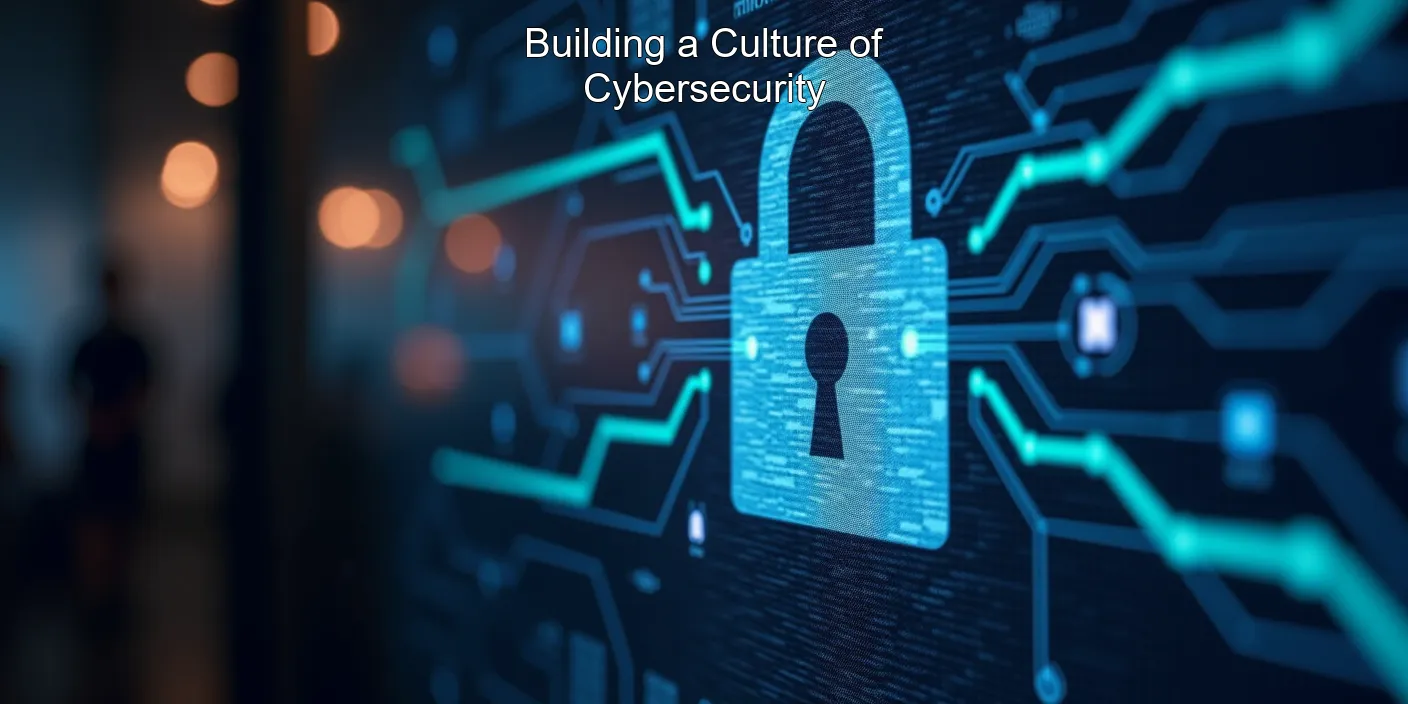Essential Cybersecurity Practices to Safeguard Your Business
| Key Aspect | Description |
|---|---|
| Threat Landscape | Constantly evolving, with new vulnerabilities emerging daily |
| Common Attacks | Phishing, malware, ransomware, DDoS |
| Business Impact | Financial losses, reputational damage, operational disruptions |
To protect your business effectively, consider these crucial steps:

#Cybersecurity, #BusinessTech, #Innovation
- Implement robust firewalls and antivirus software
- Regularly update and patch all systems
- Educate employees on cybersecurity best practices
- Enforce strong password policies and multi-factor authentication
“Cybersecurity is a shared responsibility and we all have to work together to make sure that we have the best defenses.” – Ajay Banga, CEO of Mastercard
FAQ: Cybersecurity Essentials
Q: How often should we conduct security audits?
A: Conduct comprehensive security audits at least annually, with more frequent vulnerability assessments throughout the year.
Q: What’s the first step in creating a cybersecurity plan?
A: Start by conducting a thorough risk assessment to identify your business’s specific vulnerabilities and critical assets.
Q: How can we protect against insider threats?
A: Implement strict access controls, monitor user activities, and provide ongoing security awareness training to all employees.
5 Essential Cybersecurity Tips for Businesses
- Develop and maintain a comprehensive incident response plan
- Regularly backup critical data and test restoration procedures
- Implement network segmentation to limit potential breach impacts
- Use encryption for sensitive data both at rest and in transit
- Engage in continuous monitoring and threat intelligence gathering
According to a recent study by IBM, the average cost of a data breach reached $4.24 million in 2021, highlighting the critical need for robust cybersecurity measures.
Leveraging Technology for Enhanced Security

| Technology | Benefit |
|---|---|
| AI and Machine Learning | Improved threat detection and response |
| Cloud Security | Scalable and flexible protection for distributed workforces |
| Zero Trust Architecture | Enhanced access control and reduced attack surface |
Embracing cutting-edge technologies can significantly bolster your cybersecurity posture. Consider these approaches:
“Boosting Cybersecurity: Harnessing Advanced Tech & Robust Strategies Against Cyber Threats”
- Implement AI-powered security information and event management (SIEM) systems
- Utilize cloud access security brokers (CASBs) for comprehensive cloud protection
- Adopt a zero trust security model to verify every access request
“The question isn’t whether you’ll be attacked; it’s when and how prepared you’ll be.” – Robert Mueller, Former FBI Director
FAQ: Cybersecurity Technologies
Q: How can AI improve our cybersecurity?
A: AI can analyze vast amounts of data to detect anomalies and potential threats faster than human analysts, enabling quicker response times.
Q: What is zero trust architecture?
A: Zero trust is a security model that assumes no user or device should be automatically trusted, requiring verification for all access requests.
Q: Are cloud-based security solutions reliable?
A: Yes, cloud security solutions offer robust protection and are often more agile in responding to new threats compared to traditional on-premises solutions.
Best Practices for Implementing New Security Technologies
- Conduct thorough research and vendor evaluations
- Start with a pilot program before full-scale implementation
- Ensure proper integration with existing systems
- Provide comprehensive training for IT staff and end-users
- Regularly review and update your technology stack
A 2022 Gartner report predicts that by 2025, 60% of organizations will use cybersecurity risk as a primary determinant in conducting third-party transactions and business engagements.
As you navigate the complex world of cybersecurity, remember that staying informed about Global Markets trends can provide valuable insights into emerging threats and solutions. Additionally, exploring Innovation & Tech advancements can help you stay ahead of cybercriminals.
Effective cybersecurity also requires strong Leadership & Strategy to implement and maintain robust security practices across your organization. For smaller companies, our Startup Insights section offers tailored advice on building a secure foundation from the ground up.
By implementing these essential cybersecurity practices and staying vigilant, you can significantly reduce your business’s risk of falling victim to cyber attacks and ensure a more secure digital future.
Cybersecurity Best Practices for Businesses: Safeguarding Your Digital Assets
In today’s digital landscape, cybersecurity is no longer optional for businesses. With cyber threats evolving rapidly, it’s crucial to implement robust security measures. Let’s explore the essential cybersecurity best practices that can help protect your business from potential attacks.
| Key Aspect | Description |
|---|---|
| Common Threats | Malware, Phishing, Ransomware |
| Vulnerable Areas | Networks, Endpoints, Cloud Systems |
| Critical Assets | Customer Data, Intellectual Property, Financial Information |
To effectively protect your business, it’s essential to understand the current cybersecurity landscape. Here are the key areas to focus on:
- Identify potential threats specific to your industry
- Assess your organization’s vulnerabilities
- Prioritize protection of critical business assets
- Stay informed about emerging cyber risks
“Cybersecurity is a shared responsibility that requires the attention of everyone in an organization.” – Jen Easterly, Director of CISA
Q: What is the most common type of cyber attack?
A: Phishing attacks remain the most prevalent, accounting for over 80% of reported security incidents.
Q: How often should we update our cybersecurity measures?
A: Cybersecurity measures should be reviewed and updated quarterly, with continuous monitoring in place.
Q: What’s the first step in improving our cybersecurity posture?
A: Start with a comprehensive risk assessment to identify your current vulnerabilities and prioritize areas for improvement.
- Implement multi-factor authentication across all systems
- Regularly update and patch all software and hardware
- Conduct ongoing cybersecurity awareness training for employees
- Encrypt sensitive data both at rest and in transit
- Develop and test an incident response plan
According to a recent study by IBM, the average cost of a data breach reached $4.35 million in 2022, highlighting the critical need for robust cybersecurity measures.
Building a Culture of Cybersecurity

| Element | Impact |
|---|---|
| Employee Training | Reduces human error-related incidents by 70% |
| Clear Policies | Ensures consistent security practices |
| Leadership Involvement | Drives organization-wide commitment |
Creating a culture of cybersecurity is crucial for long-term protection. Here’s how you can foster this culture:
“Cultivating Cybersecurity: Strategies for Integrating Protection into Organizational Culture”
- Integrate security considerations into all business processes
- Encourage open communication about potential security issues
- Recognize and reward security-conscious behavior
- Lead by example, with management actively participating in security initiatives
“The weakest link in the cybersecurity chain is always human.” – Kevin Mitnick, Cybersecurity Consultant
FAQ: Cybersecurity Culture
Q: How can we measure the effectiveness of our cybersecurity culture?
A: Use metrics like incident reporting rates, policy compliance, and results from simulated phishing tests.
Q: What’s the role of leadership in cybersecurity?
A: Leaders should champion cybersecurity initiatives, allocate resources, and set the tone for the organization’s security posture.
Q: How often should we conduct cybersecurity training?
A: Conduct formal training quarterly, with ongoing awareness campaigns and updates throughout the year.
Steps to Enhance Your Cybersecurity Culture
- Develop clear, accessible cybersecurity policies
- Implement regular, engaging security awareness training
- Create channels for reporting suspicious activities
- Integrate security considerations into performance reviews
- Celebrate cybersecurity wins and lessons learned
A study by Ponemon Institute found that organizations with a strong cybersecurity culture experience 52% fewer security incidents.
By implementing these cybersecurity best practices and fostering a culture of security awareness, you can significantly enhance your business’s resilience against cyber threats. Remember, cybersecurity is an ongoing process that requires continuous attention and adaptation. Stay vigilant and prioritize the protection of your digital assets to ensure the long-term success and stability of your business.
For more insights on protecting your business in the digital age, explore our Innovation & Tech section. To learn about strategic approaches to cybersecurity, check out our Leadership & Strategy resources. For startups looking to implement robust security measures from the ground up, our Startup Insights offer valuable guidance. And to understand how cybersecurity impacts businesses on a global scale, visit our Global Markets category.
| Key Aspect | Description |
|---|---|
| Threat Landscape | Constantly evolving, with new vulnerabilities emerging daily |
| Common Attacks | Phishing, ransomware, malware, DDoS attacks |
| Business Impact | Financial losses, reputational damage, legal consequences |
In today’s digital age, businesses face an ever-growing array of cyber threats. Let’s explore the essential cybersecurity practices that can help protect your organization:
- Implement robust firewalls and antivirus software
- Regularly update and patch all systems
- Enforce strong password policies
- Educate employees on cybersecurity best practices
“Cybersecurity is a shared responsibility and we all have a role to play.” – Jen Easterly, Director of CISA
Q: What is the most common cybersecurity threat for businesses?
A: Phishing attacks remain the most prevalent threat, accounting for over 80% of reported security incidents.
Q: How often should we update our cybersecurity protocols?
A: It’s recommended to review and update your cybersecurity measures at least quarterly, or more frequently if new threats emerge.
Q: What’s the first step in improving our cybersecurity posture?
A: Start with a comprehensive risk assessment to identify vulnerabilities in your current systems and processes.
Implementing Robust Cybersecurity Measures
| Security Layer | Key Components |
|---|---|
| Network Security | Firewalls, VPNs, Intrusion Detection Systems |
| Data Protection | Encryption, Access Controls, Regular Backups |
| Employee Training | Security Awareness Programs, Phishing Simulations |
To fortify your business against cyber threats, consider these critical steps:
- Conduct regular security audits
- Implement multi-factor authentication
- Develop an incident response plan
- Invest in employee cybersecurity training
“The question is not if you will be attacked, but when. Preparation is key.” – Kevin Mitnick, Cybersecurity Consultant
FAQ: Advanced Cybersecurity Strategies
Q: What is zero trust architecture?
A: Zero trust is a security model that requires all users, devices, and networks to be authenticated and authorized before granting access, regardless of their location.
Q: How can AI enhance cybersecurity?
A: AI can help detect anomalies, automate threat response, and predict potential vulnerabilities before they’re exploited.
Q: What role does cloud security play in modern cybersecurity?
A: Cloud security is crucial for protecting data and applications hosted on cloud platforms, ensuring secure access and compliance with data protection regulations.
Future-Proofing Your Cybersecurity Strategy

As technology evolves, so do cyber threats. Stay ahead of the curve by:
“Fortifying Future Cybersecurity: Proactive Measures for Evolving Threats”
- Embracing emerging technologies like AI and machine learning for threat detection
- Adopting a proactive approach to Innovation & Tech in cybersecurity
- Collaborating with industry peers to share threat intelligence
- Continuously updating your Leadership & Strategy to address new cybersecurity challenges
Remember, cybersecurity is not just an IT issue, but a critical aspect of Global Markets and business operations. By implementing these best practices and staying vigilant, you can significantly reduce your risk of falling victim to cyber attacks.

For Startup Insights on cybersecurity, consider partnering with experienced security firms or joining industry-specific cybersecurity alliances to stay informed about the latest threats and solutions.



